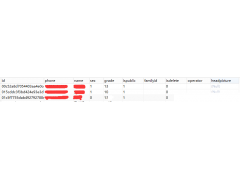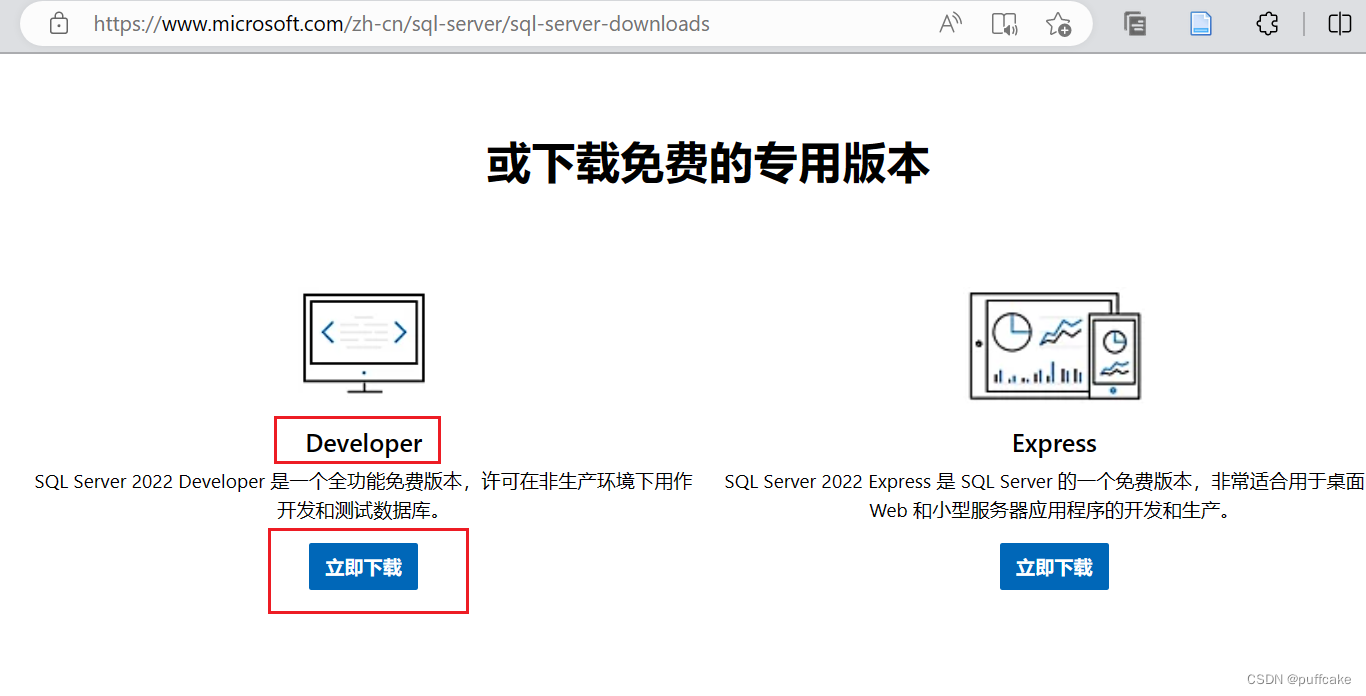下面我将给出详细的“springboot2+mybatis多种方式实现多数据配置方法”的攻略,包含以下内容:
下面我将给出详细的“springboot2+mybatis多种方式实现多数据配置方法”的攻略,包含以下内容:
- 环境配置
- 多数据源引入方式
- 多数据源的实现
1. 环境配置
首先,我们需要在pom.xml文件中引入springboot-mybatis-starter,可以使用如下配置:
<dependency>
<groupId>org.mybatis.spring.boot</groupId>
<artifactId>mybatis-spring-boot-starter</artifactId>
</dependency>
同时,如果需要连接多个数据源,也需要在pom.xml文件中引入对应的数据库驱动:
<dependency>
<groupId>mysql</groupId>
<artifactId>mysql-connector-java</artifactId>
</dependency>
<!-- 这里可以引入多个数据库驱动,以实现对多个不同的数据源的支持 -->
2. 多数据源引入方式
接着,我们需要在SpringBoot的配置文件application.properties或application.yml中进行多数据源的配置,并且在代码中使用对应的数据源进行操作。我们可以使用多种方式来实现多数据源的配置:
2.1 使用SpringBoot2提供的多配置文件方式
- 在resources目录下新建application-dev.properties和application-prod.properties,并分别配置对应的数据库信息,如下所示:
# application-dev.properties
spring.datasource.url=jdbc:mysql://localhost:3306/db1?useSSL=false
spring.datasource.username=root
spring.datasource.password=123456
# application-prod.properties
spring.datasource.url=jdbc:mysql://localhost:3306/db2?useSSL=false
spring.datasource.username=root
spring.datasource.password=123456
- 在SpringBoot主启动类中,使用
@ConfigurationProperties(prefix = “spring.datasource”)注解,将application.properties或application.yml中的数据库配置映射到DataSource对象中:
@Configuration
@MapperScan(basePackages = "com.example.dao")
public class DataSourceConfig {
@Bean(name = "devDataSource")
@ConfigurationProperties(prefix = "spring.datasource")
public DataSource devDataSource() {
return DataSourceBuilder.create().build();
}
@Bean(name = "prodDataSource")
@ConfigurationProperties(prefix = "spring.datasource")
public DataSource prodDataSource() {
return DataSourceBuilder.create().build();
}
}
@SpringBootApplication
public class MultiDatasourceApplication {
public static void main(String[] args) {
SpringApplication.run(MultiDatasourceApplication.class, args);
}
}
- 在具体的操作类中,使用
@Qualifier注解指定使用哪个数据源:
@Service("userService")
public class UserServiceImpl implements UserService {
@Autowired
@Qualifier("devDataSource")
private DataSource devDataSource;
@Autowired
@Qualifier("prodDataSource")
private DataSource prodDataSource;
@Autowired
private UserMapper userMapper;
@Override
public User getUserById(Long id) {
User user;
if (id < 100) {
// 使用devDataSource数据源
user = userMapper.selectByPrimaryKey(id, devDataSource);
} else {
// 使用prodDataSource数据源
user = userMapper.selectByPrimaryKey(id, prodDataSource);
}
return user;
}
}
2.2 使用SpringBoot2提供的多Profile方式
- 在SpringBoot主启动类中,使用
spring.profiles.active属性指定当前使用的配置文件,如下所示:
@SpringBootApplication
public class MultiDatasourceApplication {
public static void main(String[] args) {
SpringApplication app = new SpringApplication(MultiDatasourceApplication.class);
app.setAdditionalProfiles("dev"); // 指定使用dev配置文件
// app.setAdditionalProfiles("prod"); // 指定使用prod配置文件
app.run(args);
}
}
- 在配置文件中,针对不同的配置文件,指定不同的数据源信息,如下所示:
# application.yml
spring:
profiles:
active: prod
---
# application-dev.yml
spring:
datasource:
url: jdbc:mysql://localhost:3306/db1?useSSL=false
username: root
password: 123456
---
# application-prod.yml
spring:
datasource:
url: jdbc:mysql://localhost:3306/db2?useSSL=false
username: root
password: 123456
- 采用与2.1中相似的方式对具体的操作类进行注入和使用。
3. 多数据源的实现
了解了多种数据源的配置方式后,接下来我们来了解如何实现多数据源的操作。
3.1 使用Spring的AbstractRoutingDataSource实现动态数据源
- 实现一个继承AbstractRoutingDataSource的动态数据源类,重写determineCurrentLookupKey方法,根据当前的线程,动态切换数据源:
public class DynamicDataSource extends AbstractRoutingDataSource {
@Override
protected Object determineCurrentLookupKey() {
return DataSourceContextHolder.getDataSourceKey();
}
}
- 创建一个数据源的上下文类,通过ThreadLocal来保存当前的数据源key:
public class DataSourceContextHolder {
private static final ThreadLocal<String> CONTEXT_HOLDER = new ThreadLocal<>();
public static void setDataSourceKey(String dataSourceKey) {
CONTEXT_HOLDER.set(dataSourceKey);
}
public static String getDataSourceKey() {
return CONTEXT_HOLDER.get();
}
public static void clearDataSourceKey() {
CONTEXT_HOLDER.remove();
}
}
- 在SpringBoot配置类中,创建两个DataSource对象,分别指定不同的数据源信息:
@Configuration
@MapperScan(basePackages = "com.example.dao")
public class DataSourceConfig {
@Bean(name = "devDataSource")
@ConfigurationProperties(prefix = "spring.datasource.dev")
public DataSource devDataSource() {
return DataSourceBuilder.create().build();
}
@Bean(name = "prodDataSource")
@ConfigurationProperties(prefix = "spring.datasource.prod")
public DataSource prodDataSource() {
return DataSourceBuilder.create().build();
}
@Bean(name = "dynamicDataSource")
public DataSource dynamicDataSource(@Qualifier("devDataSource") DataSource devDataSource,
@Qualifier("prodDataSource") DataSource prodDataSource) {
Map<Object, Object> targetDataSource = new HashMap<>();
targetDataSource.put("dev", devDataSource);
targetDataSource.put("prod", prodDataSource);
DynamicDataSource dataSource = new DynamicDataSource();
dataSource.setTargetDataSources(targetDataSource);
dataSource.setDefaultTargetDataSource(devDataSource);
return dataSource;
}
}
- 在需要动态切换数据源的操作类中,使用
@Autowired注解直接注入DynamicDataSource即可:
@Service("userService")
public class UserServiceImpl implements UserService {
@Autowired
private DynamicDataSource dynamicDataSource;
@Autowired
private UserMapper userMapper;
@Override
public User getUserById(Long id) {
if (id < 100) {
// 切换到dev数据源
DataSourceContextHolder.setDataSourceKey("dev");
} else {
// 切换到prod数据源
DataSourceContextHolder.setDataSourceKey("prod");
}
User user = userMapper.selectByPrimaryKey(id);
DataSourceContextHolder.clearDataSourceKey();
return user;
}
}
参考示例代码:https://github.com/Ricardo-LiPeng/springboot-mybatis-multipledatasource
3.2 使用注解和AOP实现动态数据源
- 在动态切换数据源的注解类中,使用自定义注解@TargetDataSource来指定需要使用的数据源key:
@Retention(RetentionPolicy.RUNTIME)
@Target({ElementType.METHOD, ElementType.TYPE})
public @interface TargetDataSource {
String value() default "";
}
- 创建一个AOP切面类,在切面中动态切换数据源:
@Aspect
@Component
public class DynamicDataSourceAspect {
@Before("@annotation(ds)")
public void beforeSwitchDS(JoinPoint point, TargetDataSource ds) {
String dataSourceValue = ds.value();
if (StringUtils.isEmpty(dataSourceValue)) {
// 没有指定数据源key,使用默认数据源
DataSourceContextHolder.setDataSourceKey("dev");
} else {
DataSourceContextHolder.setDataSourceKey(dataSourceValue);
}
}
@After("@annotation(ds)")
public void afterSwitchDS(JoinPoint point, TargetDataSource ds) {
DataSourceContextHolder.clearDataSourceKey();
}
}
- 在需要动态切换数据源的操作类中,使用自定义注解@TargetDataSource来指定需要使用的数据源key:
@Service("userService")
public class UserServiceImpl implements UserService {
@Autowired
private UserMapper userMapper;
@TargetDataSource("prod") // 指定使用prod数据源
@Override
public User getUserById(Long id) {
return userMapper.selectByPrimaryKey(id);
}
}
参考示例代码:https://github.com/Ricardo-LiPeng/springboot-mybatis-multipledatasource/tree/master/springboot-mybatis-multipledatasource-annotation方式
本文标题为:springboot2+mybatis多种方式实现多数据配置方法


基础教程推荐
- 详解Redis连接命令使用方法 2024-03-23
- Mysql查看死锁与解除死锁的深入讲解 2024-02-14
- mysql服务启动却连接不上的解决方法 2023-12-08
- SQL Server之SELECT INTO 和 INSERT INTO SELECT案例详解 2024-02-13
- Redis配置项汇总 2024-04-04
- 如何保障mysql和redis之间的数据一致性 2024-04-25
- mysql时间字段默认设置为当前时间实例代码 2022-08-31
- Redis GEORADIUS命令 2024-04-06
- 浅谈数据库优化方案 2024-02-16
- MySQL索引优化之适合构建索引的几种情况详解 2023-12-29

















